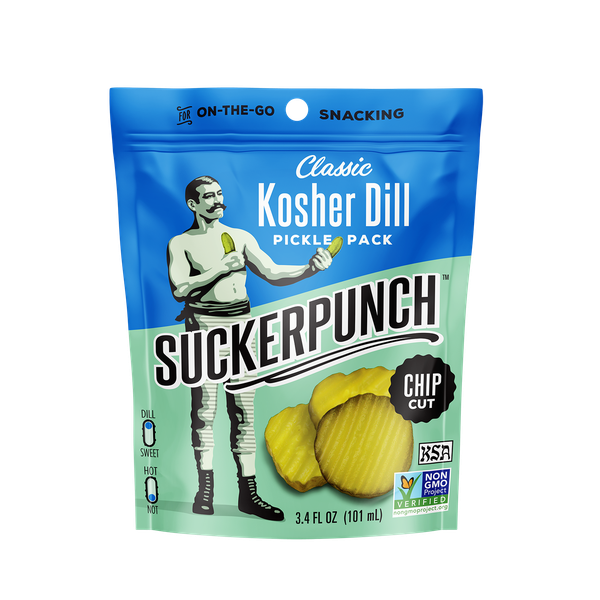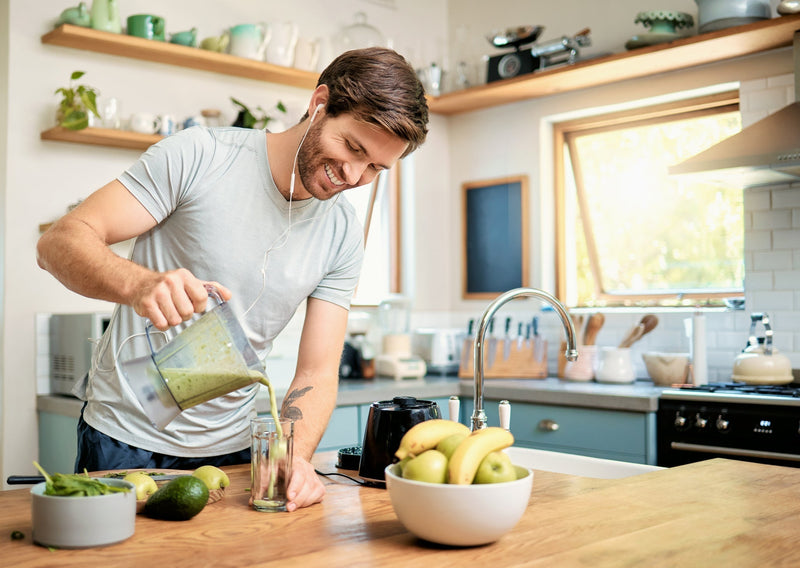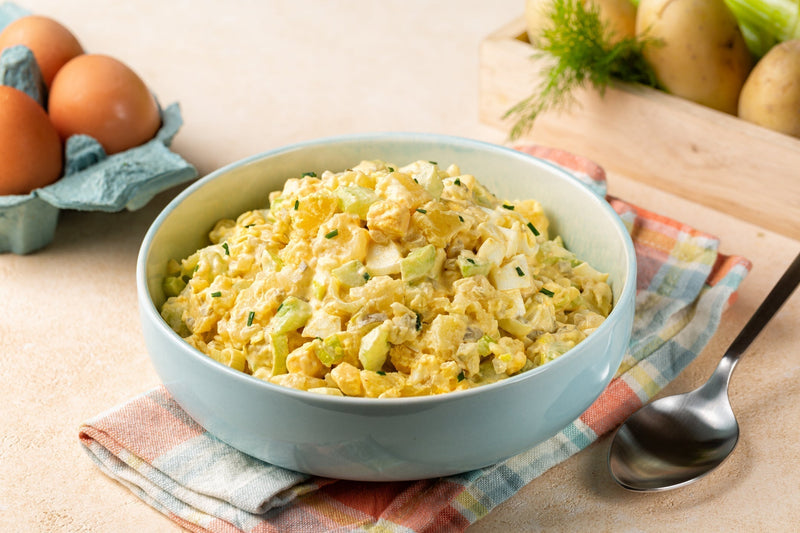
The History of Pickles: A Brief Timeline
History and pickles go together like cucumbers and vinegar brine. If that joke was lost on you, check out how pickles are made to sharpen up on how our favorite historical delicacies are created.
Pickles have been around as long as beer. Throughout history, they’ve been equally as popular as wine and cheese. The myriad advantages that pickles offer range from health and dietary benefits to ease of preservation and food safety.
While the earliest recorded pickles popped up nearly 4000 years ago, the pickle hasn’t changed all that much. Yes, the pickle has undoubtedly developed in production and distribution to keep up with the day's conventional methods. However, the mundane recipe was too basic for our tastes.
There have only ever been a few defining periods where the pickle's flavor truly took on a new defining characteristic in the entire history of pickles. One of those moments was 10 years ago in the kitchen of SuckerPunch founder Dave van Alphen.
Before we can get into how SuckerPunch is making modern history by changing pickles for the better, let’s dive into a quick history lesson about the pickle, and its journey through time:
The Ancient Approach To The Process of Pickling
Pickling vegetables dates back to ancient times and prehistory. Anthropological evidence via pieces of old recipes and other written relics, suggests that pickles were part of the Mesopotamian culture in the year 2000 B.C.
While it is hard to decipher fact from fiction, the common kernel of truth that’s stuck in history’s teeth is this: pickles were present in ancient Mesopotamia and have been a prevalent snack food pleasure ever since.
By the mid-1500s B.C., pickling had spread throughout the ancient world. Much like modern culture, these vinegar-soaked vegetables were a coveted form of preserved food in ancient times. Nice to know that some things really never change.
It wasn’t until Indian varieties of cucumbers arrived in the Tigris Valley when brine was infused with other natural additives. The natural wealth of spices native to the region gave rise to a more flavorful brine. Perhaps the most pivotal moment in pickle history, the addition of dill, created the base for what is now the most common flavor of pickle ever created.
Famous Figures And Their Place In Pickle History
Cleopatra - Perhaps the most famous ancient pickle lover, the Queen of Egypt is credited with having a regular dose of pickle in her life. Rumor has it that Cleopatra used pickles as part of her beauty regimen. While it was unclear how she used pickles, we can assume that she experimented with pickles in various ways.
We know that Cleopatra ate pickles, but how else she used them is anybody’s guess. Was Cleopatra the first to put cucumber slices on her eyes during a spa treatment? Maybe...who knows?!
All we know for sure is that this ancient beauty was concerned enough with her appearance that looking in the mirror stirred in her the desire for briney cucumbers. Say what you want about this kooky queen of the Nile, but one thing she was not in denial about was the benefit of cucumbers soaked in a vinegar brine.
Julius Caesar - This Roman Emperor was Cleopatra’s main squeeze, so it’s no coincidence that her pickle loving ways rubbed off on him too. Cleo convinced Julius Caesar that pickles helped keep the body vibrant and strong.
Caesar was so enamored with pickles that he began to feed them to the Roman army. Used as a staple food during long battles, the pickle kept soldiers vibrant and healthy to great success!
Though we now know the pickle is high in electrolytes, this salty snack was nothing short of magic to the Romans. Pickles pack a healthy dose of salt, which helps the body to replenish its natural strength. This attribute makes pickles, and pickle juice, a great source of vitality for athletes of all kinds.
The Medieval Method For Making Pickles - The Emergence of Dill!
While people were probably pickling and preserving foods in vinegar and other spices, the emergence of dill in Europe in the late stages of the first millennium was a total game-changer. Right around the year 900 AD, new trade routes from the East emerged, allowing things like spices, textiles, and herbs to permeate Europe.
One of these new exotic treats, dill, traveled from Sumatra, making it a rare and coveted herb. Dill had been used previously by Romans and Greeks, but it hit Europe like a right hook to the chops. The emergence of dill brought with it a resurgence of pickling and a commitment to the powerful dill flavor of the pickle.
Even though ancient cultures had previously used dill, the new prevalence of the herb throughout Western Europe encouraged the practice of pickling as dill could stand up to and tame the potent nature of the viscous vinegar brines used at the time.
Mr. Heinz, Mr. Mason, And The Emergence Of The Modern Pickle!
Over the course of a few hundred years, from 1600-1900, several delectable dominos fell in rapid succession. First, Dutch settlers in New York during the mid-1600s grew massive quantities of cucumbers. These cheap cucumbers were bought by distributors, brined, and sold on the streets of what is now modern Brooklyn as one of the first-ever street foods!
The daily availability of pickles for sale in such a public forum created a demand for pickles that had previously never been seen. While pickled goods had always been part of the private lexicon, they were now a public sensation.
Second, in the early 1800s, a man named Nicolas Appert discovered storing food in sealed glass jars kept it fresh for long periods. Nicolas’ discovery came at the behest of Napoleon Bonaparte, who was looking for a better way to preserve food in order to feed his army while on the move. The sealed glass jar was a knockout punch for preserved food, especially for the pickle.
Finally, at the turn of the 20th century, H.J. Heinz became the undisputed pickle king when he took the demand for pickles and combined it with modern canning technology. Heinz used the glass jar technology of John Mason, whose “Mason Jar” sealed food thanks to a paraffin wax seal. Heinz caned and distributed pickles throughout the united states using the classic kosher dill recipe perfected over thousands of years by humankind.
Like a beautiful jab-cross-hook combo these events led to the emergence of pickles as the readily available snack we know today.
A Brief History Of SuckerPunch
While it is important to know your history, ancient pickles don’t do much for you in the year 2021. Pickling may be an effective method of preserving food, but nothing lasts forever. Pickling food has turned from a once-innovative necessity to an evolving culinary technique. SuckerPunch is on the cutting edge of all things pickled, and our pickles are evidence that the best changes hit you all at once.
Most common purveyors of pickles are problematic for the evolution of this historically lauded snack. Whether you want to attribute it to the pickle's overall age, or the seemingly unchanged recipe, pickles haven’t had much “wow-factor” for quite some time.
The reality is that at some point in the not-too-distant past, pickles became flat out boring! In 2011 our founder David van Alphen realized that his love affair plain pickles had hit a bit of a rut, and he set out to create the perfect pickle!
SuckerPunch pickles are made with a blend of 11 bold spices that elevate the classic flavors and enhance the pickle's natural zest. History may be full of pickles, but our pickles have a history of knocking out the competition taking us from contender to champ in just a few short years.
Yes, the classic dill pickle has earned its place in history, but there is no reason that something great can’t get better. The dill pickle's history proves that change takes time, but it’s the big moments that really push the momentum forward for the next generations.
SuckerPunch is making a big push. No longer content with the same old boring pickles, we are looking to change the story of modern pickles and etch our names into the tome of pickle history. To learn more about all things pickles, check out the SuckerPunch blog, and get a taste of our very own SuckerPunch products.

















































